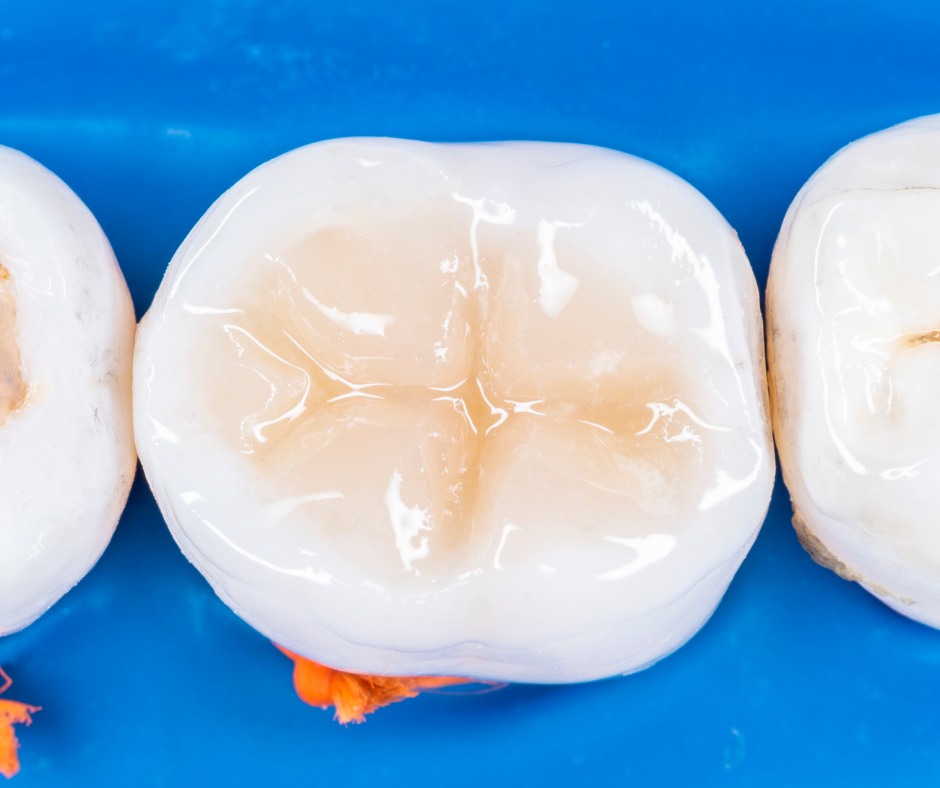As you look in your child’s mouth, you see a dark spot that you never noticed before on one of your child’s teeth. You ask them to carefully brush their teeth again, but you find that the spot just won’t go away. Likely, you’ve noticed the very early stages of dental caries, a common form of tooth decay known as a cavity.
Babies as young as 7 months old can start to experience tooth decay. When tooth decay occurs, a composite dental filling from your child’s dentist can quickly and easily correct the damage caused by cavities.
If your child expresses anxiety about the procedure, don’t lie to them, but rather frame the conversation in positive terms. You can use words like “sugar spot” if you want to avoid the scarier-sounding “cavity.” Tell them calmly what to expect and rest assured that your pediatric dentist will help them through it. We practice gentle pediatric sedation dentistry, and can help your child be completely relaxed during their pediatric dental filling.
Call Children’s Dentistry of Las Vegas
info@childrensedationdentist.com
At Children’s Dentistry of Las Vegas, our specially-trained staff takes the time to explain not only the procedure to your child, but also shows them the tools we’ll use and how we’ll use them. Our goal is to make the filling experience as smooth and painless as possible for your child, so they enjoy coming to the dentist no matter the reason. Plus, all ten of our Las Vegas offices keep tooth filling costs low, making the experience more enjoyable for parents as well!
Composite Dental Fillings: Nearly Invisible
When most parents think of fillings, they think of the silver fillings they may have received as a child. Composite fillings are much different than their silver counterparts and are a vastly superior choice in every way.
Composite dental fillings for children’s teeth are made from a tooth-colored material so as to be nearly undetectable. The material bonds to the enamel to create a hard insulated shell on the tooth to help prevent further damage.
During your child’s pediatric dental filling, the dentist will provide a thorough cleaning of your child’s teeth. They will remove all bacteria and decay from the cavity before applying the composite filling. The filling is then “cured” with UV light so it hardens to the tooth.
Once the filling is in place, ensure your child uses proper oral hygiene both to care for the filling and to prevent further cavities. This includes brushing twice per day for two minutes each time, and flossing and using mouthwash once they’re old enough.
Composite Dental Fillings: An Alternative to Silver Fillings and Crowns
If your child already has prior silver fillings, we can replace them with composite child dentist fillings. Composite fillings tend to be longer-lasting than silver. Additionally, composite fillings tend to contract and pull the tooth together, whereas silver fillings tend to swell and push outward on the tooth. This can cause the tooth to break, requiring a crown to repair it.
Since younger children may be too uncooperative to have a crown put in, composite pediatric fillings can be a great alternative. They will protect the teeth until the child is old enough for the crown procedure.
Composite dental fillings are ideal for children who may be sensitive to having a noticeable silver filling. When they speak or eat, the composite material draws less attention, which can help soothe any anxieties your child may have about the appearance of their filling.
Although pediatric dental fillings can repair damage from tooth decay, the best treatment is prevention. Make sure you schedule an appointment for your child to receive a routine cleaning and exam every six months. By doing so, you’re more likely to keep tooth decay at bay and improve your child’s overall oral health.

